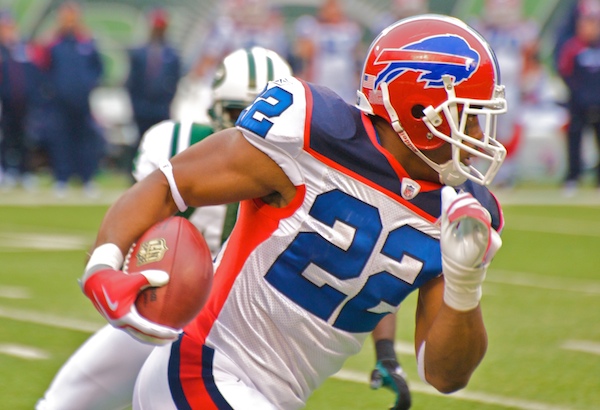Dear Sports Fan,
What is a trade in fantasy football? And why do people who play fantasy football get so excited about trading?
Thanks,
Noah
Dear Noah,
We’ve written a few posts on how fantasy football, two of which are good preparatory reading in order to understand trades: How does fantasy football work? and What does it mean to start or sit someone in fantasy football? In those posts, you’ll learn how fantasy football teams are constructed (by selecting real world football players in a fantasy draft) and then evaluated each week (by the statistics that a select group of the starting players on each team accumulate.) After the initial selection of players onto teams, the only way improve your team’s fortunes is through swapping players with the “bank” of players that have not been selected by any team — this is called adding/dropping a player — or by swapping players with another team. This is called trading.
Every fantasy trade is the product of negotiation between players. Two fantasy owners get together in person or over the internet and go back and forth suggesting different ways of swapping players until they both agree. At this point, they can enter the trade into the website used to run the fantasy league. Every fantasy league is a little different, but there is often some kind of review period so that the rest of the fantasy league or the person who runs it can confirm that this was a “good” trade where both people think they’re getting the better deal. It’s important to avoid trades based on collusion (you trade me your good player for my bad one and I’ll buy you a pony) because it subverts the honesty of the competition.
Fantasy football is almost but not quite a closed system. In a true closed system, we’d be able to simply add up all the points from the players involved in a trade at the end of the season and whichever person ended up with the players with more cumulative points would have “won” the trade. In fantasy football though, there are positional requirements that make things more complicated. Each week, a team’s starting lineup has to consist of (for example) one quarterback, two running backs, and three wide receivers. If my team has two good quarterbacks but no good running backs, I will benefit from a trade that moves my good quarterback for your decent running back even if the quarterback will end the season having scored more points than your running back. There are a wide variety of reasons to make trades and looking for a trade partner, assessing their team, deciding which type of trade to approach them with, and then working back and forth with them to make it is great fun. All of this makes trading one of the most enjoyable parts of fantasy football. Here are some of the most common types of trades:
- One position for another trade — this is the scenario we just talked about. If I’m rich at one position but poor at another, I’ll look for teams in the opposite position and talk to them about making a deal.
- Two or three for one trade — this is a common trade made between one team at the top of the standings and another team towards the bottom or middle. If one team is so strong that they can give up two or three good players for another team’s great player, both teams can profit. The good team just got better by adding a great player to their roster and the not-so-good team improves in several different spots. The risk for the better team is that they’re putting more of their eggs in one basket and as we all know, an NFL player is an egg basket that frequently gets injured and breaks.
- Dissatisfied like for like trade — the ultimate grass-is-greener logic. I’m annoyed at the performance of my tight end and you’re annoyed at the performance of yours, so we just swap them. This is relatively rare because in order to do it, both people need to think they’re winning the deal. This type of trade truly is zero sum.
- Bye week trade — bye weeks (read the post on what a bye week is here) can hit fantasy football teams hard. On some weeks there can be up to six real NFL teams that don’t play. If you see that a team in your league is stuck with a lot of their players not playing that week, you may be able to induce them to trade you some of them for players who actually have games. Using this logic, you might be able to get slightly better players in the deal just because you’re willing to wait a week to use their statistics.
- Keeper league trade — some fantasy leagues allow fantasy owners to retain players from year to year. By the time the middle of the season comes around, teams at the bottom of the league may be willing to give away good players this year for players that are more attractive candidates for next year. This type of trade may seem like collusion because it is intentionally imbalanced in terms of how good the players are but if you think of fantasy football as a multi-year instead of a single year competition, it makes sense.
Trading in fantasy football is an art and a skill. It involves analysis, negotiation, and risk taking. If you’re in a fantasy league, give it a shot. If you’re just around people who are in the midst of making fantasy trades, ask them what type of trade it was.
Thanks for the question,
Ezra Fischer

